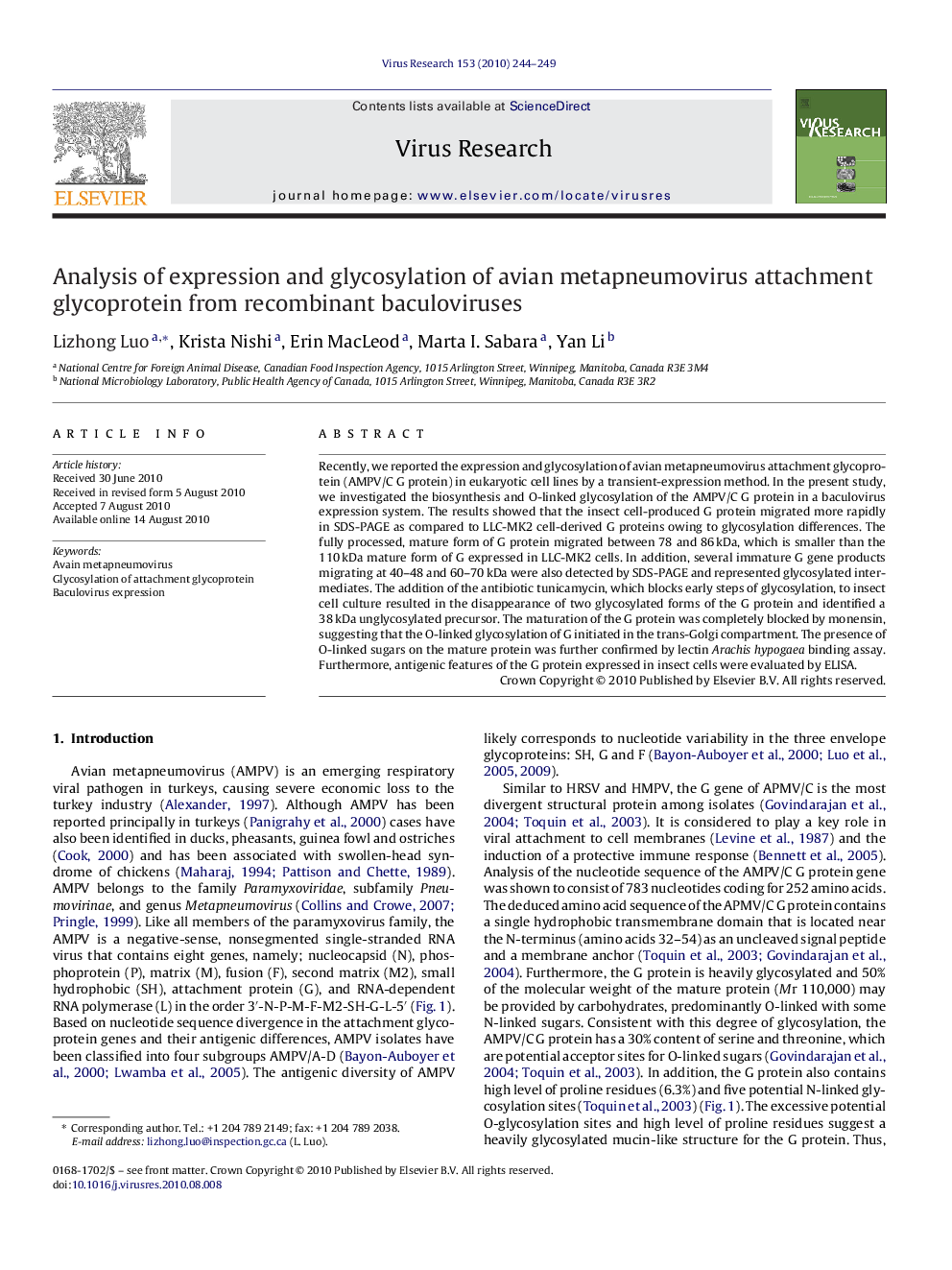| Article ID | Journal | Published Year | Pages | File Type |
|---|---|---|---|---|
| 3429252 | Virus Research | 2010 | 6 Pages |
Recently, we reported the expression and glycosylation of avian metapneumovirus attachment glycoprotein (AMPV/C G protein) in eukaryotic cell lines by a transient-expression method. In the present study, we investigated the biosynthesis and O-linked glycosylation of the AMPV/C G protein in a baculovirus expression system. The results showed that the insect cell-produced G protein migrated more rapidly in SDS-PAGE as compared to LLC-MK2 cell-derived G proteins owing to glycosylation differences. The fully processed, mature form of G protein migrated between 78 and 86 kDa, which is smaller than the 110 kDa mature form of G expressed in LLC-MK2 cells. In addition, several immature G gene products migrating at 40–48 and 60–70 kDa were also detected by SDS-PAGE and represented glycosylated intermediates. The addition of the antibiotic tunicamycin, which blocks early steps of glycosylation, to insect cell culture resulted in the disappearance of two glycosylated forms of the G protein and identified a 38 kDa unglycosylated precursor. The maturation of the G protein was completely blocked by monensin, suggesting that the O-linked glycosylation of G initiated in the trans-Golgi compartment. The presence of O-linked sugars on the mature protein was further confirmed by lectin Arachis hypogaea binding assay. Furthermore, antigenic features of the G protein expressed in insect cells were evaluated by ELISA.
Research highlights▶ Insect cell-produced AMPV/C G protein is O glycosylated. ▶ Binding of the lectin Arachis hypogaea confirms the presence of O-linked sugars on G protein. ▶ O-linked glycosylation of G initiates in the trans-Golgi compartment. ▶ The mobility differences for the G proteins from mammalian and insect cells are due to glycosylation differences.
